26th Jan 2023
"You must know the vineyards to understand the wines."
- Edouard Moueix
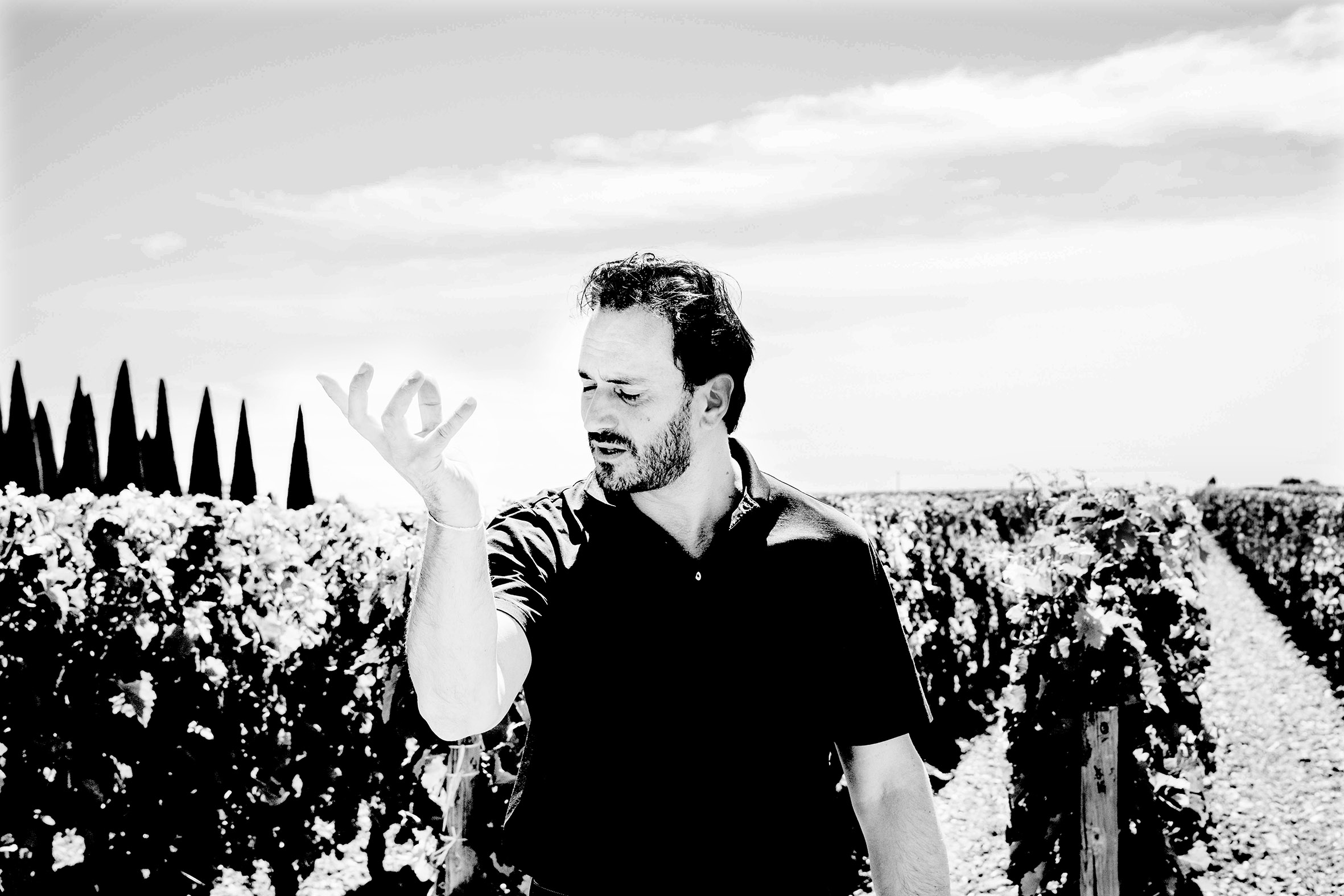
Pomerol Reimagined
There can be few families owning as much land and as many Chateaux in Pomerol as the establishment of Jean-Pierre Moueix, founded by its namesake in 1937. Today the company—merchant, landowner, and producer—is managed by Jean-Pierre’s son, Christian, and grandson, Edouard.
Christian took over management of the family business in 1991, and his son Edouard joined the company in 2003.
“As you know, my father is a trained agronomist and winemaker,” said Edouard as we left Christian after a tasting at their office in Libourne and headed for the Pomerol plateau. “He is obsessed with vineyards. You must know the vineyards to understand the wines.”
An avid collector of modern art, Christian Moueix’s ambitions and impressive achievements have been limited only by his tireless imagination. He did a graduate degree at Davis University in California in the 1960s, which is somewhat unusual, being Bordeaux born and bred and considering Bordeaux University had a famous enology program. Yet it was his spirit of adventure and time in California that caused him to fall in love with the wines of Napa Valley, enough to purchase the Napanook vineyard in 1982. In 1983, he established Dominus Estate—now one of the most sought-after and collected Napa labels.
Nonetheless, Bordeaux’s right bank has always been and remains the home base for Christian and Edouard.
Although the Moueix family also owns several properties in Saint-Émilion, most notably the Premier Grand Cru Classé B property Château Bélair-Monange, which is also Edouard’s home, Pomerol is Christian’s and Edouard’s literal stomping ground. Their office is in the region’s largest town, Libourne, but they are more likely to be found in the vines. Towards the end of harvest last September, I joined Edouard for a tour through three of their top Pomerol vineyards: Trotanoy, La Fleur-Pétrus, and Hosanna.
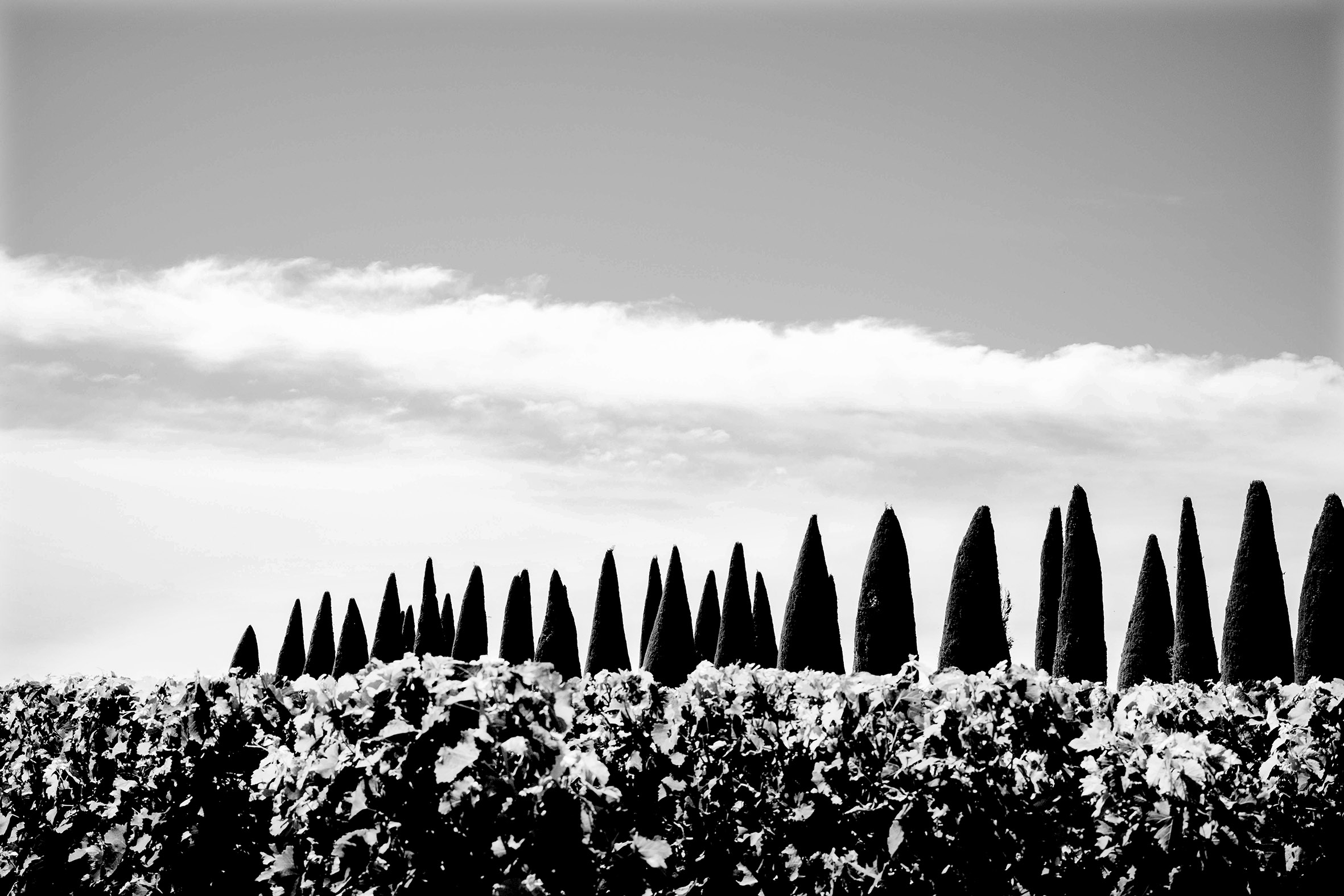
Trotanoy was purchased by Jean-Pierre Moueix in 1953. Well located on the Pomerol plateau, at 17.8 acres, this is a medium-sized vineyard by the commune’s standards, larger than Lafleur (about 11 acres) and smaller than Petrus (just over 28 acres). The vineyard is laid-out in one contiguous block around the Château, bordered by Nenin, La Violette, Bourgneuf, and Latour à Pomerol. Inexplicably, it produces a wine that is not remotely similar in style to its neighbors, which reaffirms the magic of terroir.
Trotanoy produces a wine that is not remotely similar in style to its neighbors, which reaffirms the magic of terroir.
“Trotanoy is composed of five major blocks, three of which always go into the grand vin, and two which seldom do,” said Edouard. Of the three core parcels, one consists of clay/black clay (over an iron pan/blue clay), one is mainly gravel, and the third is sandy gravel.
“We used to sell off the fruit from the lesser parcels,” Edouard commented. “But in great years, these can make very good wine, that is, well, Trotanoy. So, in 2009 we decided to produce a second wine, mainly from these two blocks, called Espérance de Trotanoy. We don’t make this label in poorer vintages, such as 2013 and 2021.”
Trotanoy has traditionally been exclusively or near enough 100% Merlot. However, the Moueixs have recently planted more Cabernet Franc, which could be finding its way into the grand vin more and more.
“Trotanoy is like the Brutalism art movement,” Edouard commented. “It’s rough and raw to begin.”
"Trotanoy is like the Brutalism art movement. It’s rough and raw to begin."
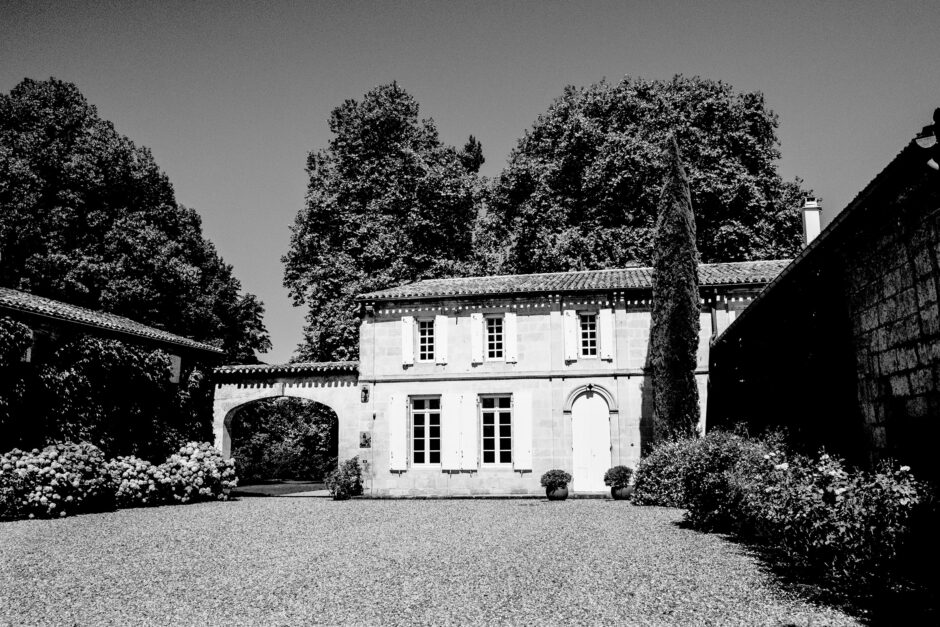
I couldn’t agree more with this description. Trotanoy has one of those singular expressions I often have no problem nailing in a blind tasting. It can be difficult to understand when it is young. In the first decade or so, its broody, closed-down nose typically offers subtle notions of crushed rocks, iron ore, tar, and truffles. However, give it 15 to 25-years+, and fantastically fragrant, exotic spice and incense-laced notes emerge, intertwined with a myriad of red and black fruit preserve layers and a distinctive rust-like minerality.
Part of La Fleur-Pétrus’ vineyard is located across the road from Trotanoy, between it and Le Pin, while the other two major sections are roughly on either side of Petrus and Lafleur. A property that has gone through significant changes in recent years, until the last decade, I have sometimes found this wine a little disappointing, lacking the consistency of some of the other top Moueix properties. Not anymore.
La Fleur-Pétrus was purchased by the Moueix family in 1950, before Trotanoy. Apart from major replanting after the great frost of 1956, the vineyard remained unchanged until the mid-1990s, when part of Le Gay was purchased and folded in, followed by La Providence (2005) and, most recently, Guillot (2011). To be clear, not all these newly purchased plots became part of La Fleur-Pétrus.
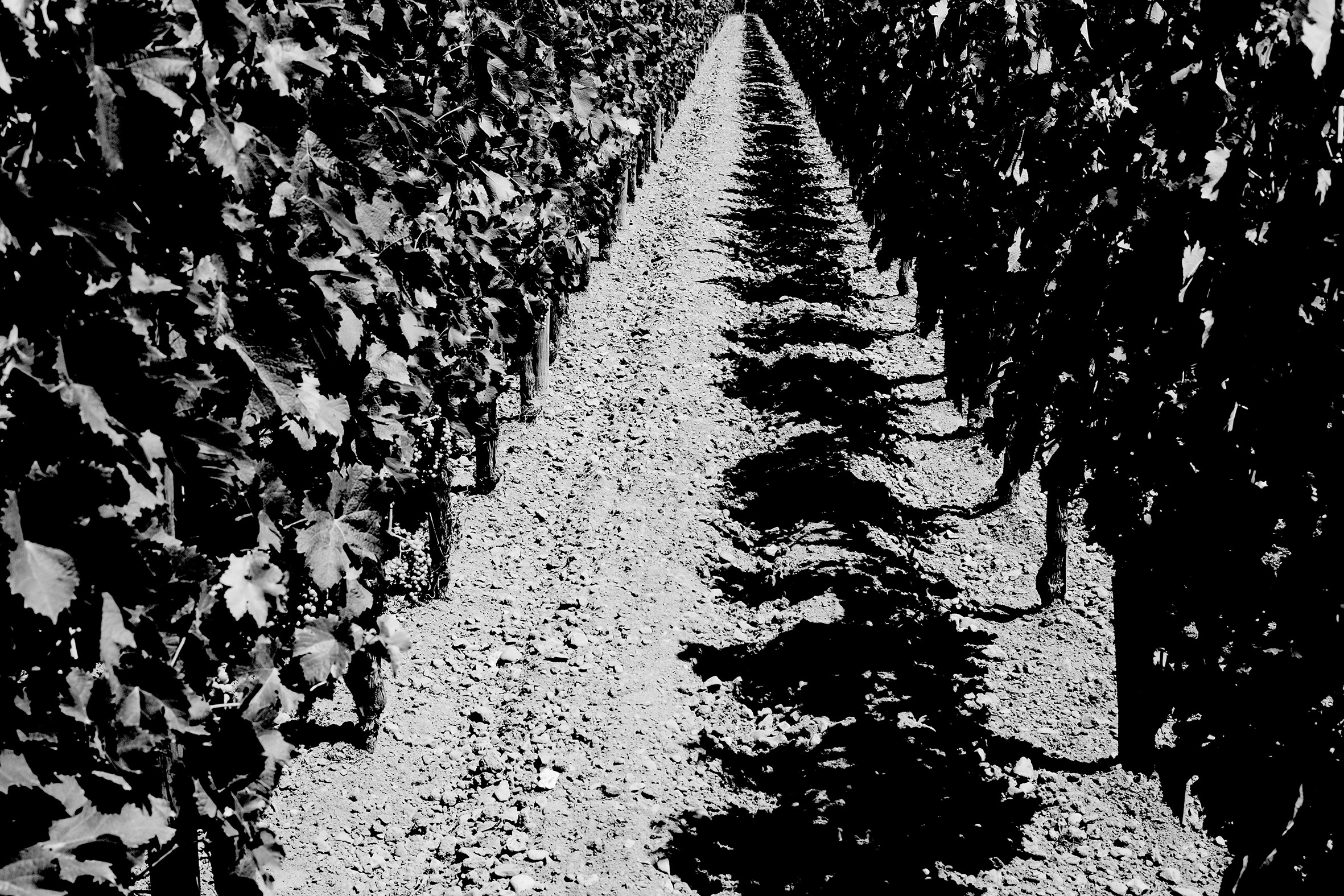
“We added to La Fleur-Pétrus Guillot’s parcels of old Cabernet Franc, which was planted in 1956 and 1964,” said Edouard. “Only a small portion of La Providence was added. This gave us the opportunity to swap out the lesser plots of La Fleur-Pétrus and add them to Lagrange (in Pomerol, another Moueix property).
Therefore, not only has the style of La Fleur-Pétrus seen a dramatic shift in recent years but so has production. This is now a vineyard of significant size (by Pomerol’s standards) at 46 acres. The soil profile is relatively varied and complex, including a good portion of gravel and deep clays. The varieties planted are roughly 91% Merlot, 6% Cabernet Franc, and 3% Petit Verdot.
Château Hosanna didn’t even exist until 1999. Of course, the vineyard predates this—under the name of Château Certan-Giraud. You can still find old bottles of Certan-Giraud in the market, and, in fact, I recently had a 1967, which was drinking beautifully. (Not many know that 1967 was a very good vintage in Pomerol, where much of the Merlot had come in before the rains that plagued that harvest.) In 1998, Christian Moueix seized the opportunity to purchase the vineyard, reimagining what it could be.
“My father kept the best Certan-Giraud parcels and sold the rest to Jean-Hubert Delon for Château Nenin,” said Edouard.
Based on soils of blue clay and red gravel, Hosanna is dream terroir.
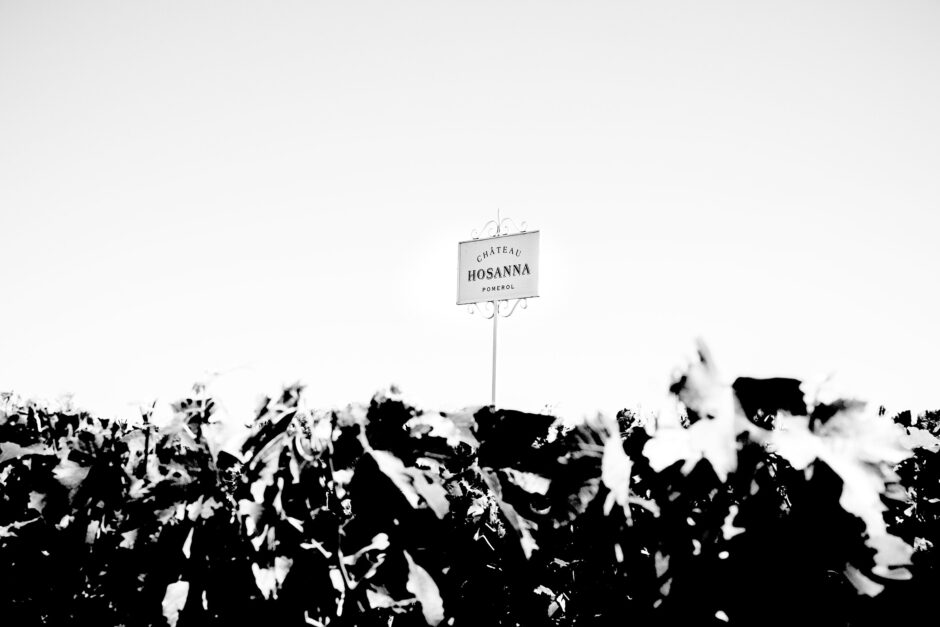
Hosanna is a small nugget of an 11-acre vineyard, bordering on Lafleur to the north, Petrus to the east, and Vieux Château Certan to the south. Based on soils of blue clay and red gravel, this is dream terroir.
“The oldest parcels were planted in 1956, 1957, and 1978,” said Edouard as we walked the site, where the varietal composition is roughly 70% Merlot and 30% Cabernet Franc.
The emerging styles of the reinvented La Fleur-Pétrus and Hosanna are revealing themselves, intriguingly, as complementary Yin and Yang faces of Pomerol. La Fleur-Pétrus tends to be more reticent, restrained, and hard to read in its youth, possessing great elegance and a compelling perfume that requires some patience to enjoy. On the other hand, Hosanna is out-of-the-gate flamboyant, delivering opulent fruit and hedonic fragrance when young, yet has the stamina to stand the test of time.
The emerging styles of the reinvented La Fleur-Pétrus and Hosanna are revealing themselves, intriguingly, as complementary Yin and Yang faces of Pomerol.
At the Ets Jean-Pierre Moueix office in Libourne, I tasted through the line-up of their 2018s—a relatively hot, dry, “extreme” vintage that was not without its challenges.
“2018 was marked by an abundance of sun,” Edouard commented. “With our experience at Dominus, we embraced this. Phenolic ripeness is key. We had to wait for fully ripe tannins and flavors. Therefore, some alcohols are over 15%, but the wines are balanced.”
Indeed, 2018 was a strong, consistent year for the Moueixs and one where the changes at La Fleur-Petrus became more apparent than ever. It’s clearly a Moueix vintage and one that lovers of decadently rich, plush Merlot with plenty of freshness, perfume, and nuances will want to grab as much as they can find!
-
Article & Reviews by Lisa Perrotti-Brown MW
Photos by Johan Berglund

PRODUCERS IN THIS ARTICLE
> Show all wines sorted by scoreMore articles

2021 Bordeaux in Bottle and A Modest Proposal
24th Apr 2024
599 tasting notes

Pilcrow’s New Releases
18th Apr 2024
7 tasting notes
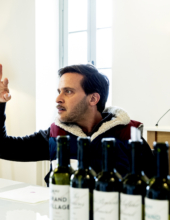
Bordeaux 2023 Primeurs Photo Essay
18th Apr 2024
0 tasting notes

Harlan Estate, BOND, Promontory 2021 and 2011
11th Apr 2024
14 tasting notes
Show all articles